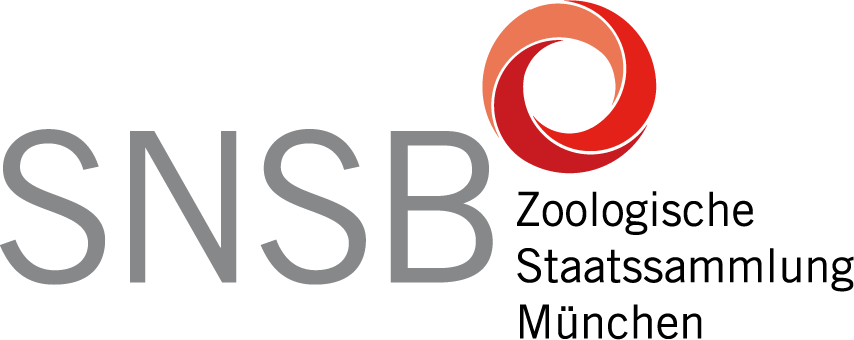Research
Section Hemiptera
Research projects of the Hemiptera section
Heteroptera
Systematics and phylogeny of water striders (Heteroptera, Gerromorpha) and selected water bug taxa (Heteroptera, Nepomorpha)
With more than 2,450 described species so far, the Gerromorpha or semi-aquatic bugs, represent a small but remarkably diverse and fascinating taxon in terms of morphology, ecology, and life history adaptations within the Heteroptera. Various aspects of their phylogeny, however, are still subject to discussion. Using modern high-throughput sequencing technologies, low-coverage and cost-effective genome-skimming methods allow not only the analysis of freshly collected animals but also the processing of decades-old and rare collection material. These data allow the analysis of complete mitochondrial genomes as well as numerous other markers to provide a robust phylogeny of the Gerromorpha.
Other projects focus on the systematics and phylogeny of various taxa of the true water bugs (Heteroptera, Nepomorpha), e.g., the phylogeny of the pygmy backaswimmers (Pleidae) or the relationships within the species-rich water boatmen genus Sigara (Nepomorpha, Corixidae).
Building-up a comprehensive DNA barcode library for the water strider and water bugs (Gerromorpha, Nepomorpha) of Europe
This project has as objective the generation of a comprehensive library of DNA barcodes for the semi-aquatic and aquatic Heteroptera (Gerromorpha, Nepomorpha) of Europe. In parallel we test the test the efficiency of DNA barcodes to discriminate the analyzed species. The data set represents an essential baseline for modern bioassessment studies of freshwater habitats using high-throughput technologies. The already existing data also open new questions regarding the causes of observed low inter- and high intraspecific molecular variability and indicate the necessity of taxonomic revisions for various taxa.
Selected literature
Havemann N, Gossner MM, Hendrich L, Morinière J, Niedringhaus R, Schäfer P, Raupach MJ (2018): From water striders to water bugs: The molecular diversity of aquatic Heteroptera (Gerromorpha, Nepomorpha) of Germany based on DNA barcodes. PeerJ 6: e4577. (https://peerj.com/articles/4577.pdf)
Raupach MJ, Hendrich L, Küchler SM, Deister F, Morinière J, Gossner MM (2014): Building-up of a DNA barcode library for true bugs (Insecta: Hemiptera: Heteroptera) of Germany reveals taxonomic uncertainties and surprises. Public Library of Science ONE 9 (9): e106940. (http://journals.plos.org/plosone/article?id=10.1371/journal.pone.0106940)
Auchenorrhyncha
Characterization of species boundaries, morphological plasticity and host plants of treehoppers (Hemiptera, Membracidae) in Central and South America
Treehoppers are best known for their enlarged and ornate pronotum, expanded into often fantastic shapes that enhance camouflage or mimicry. The project analyzes the species diversity of treehoppers and their host plants from Costa Rica and Peru using molecular methods (DNA barcoding) for the first time. These data will determine the different spectra of host plants of the studied animals and will allow the identification of monophagous and polyphagous species. Finally, it is planned to document and digitalize representative treehopper specimens by using a 3D scanning device. Such high-resolution 3D images will become the central element of integrative cybertaxonomic species descriptions and revisions.
Selected literature
Schulze K, Heß M, Schönitzer K (2016) Treehoppers of Panguana (Peru), with additional faunistic remarks and 3D-SEM illustrations (Auchenorrhyncha, Membracoidea). Mitteilungen der Münchener Entomologischen Gesellschaft 106: 39-64.


